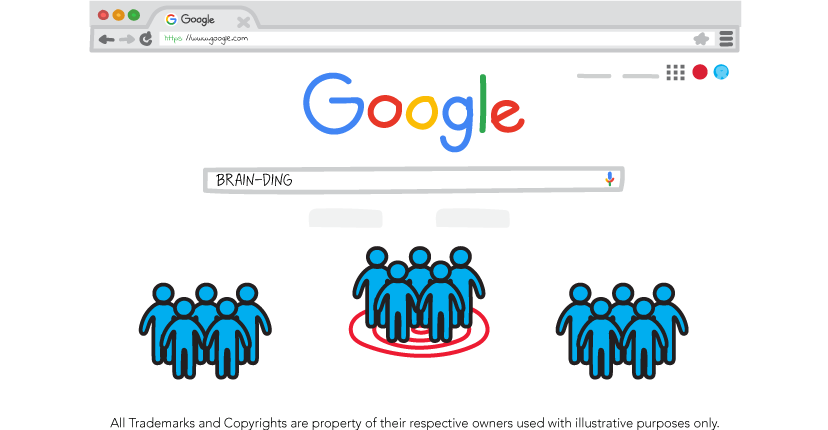Google’s iconic homepage gets 8 billion pageviews a day, from over 700 million unique visitors. So why doesn’t Google sell even a tiny portion of that golden real estate to advertisers? Why don’t they cash in on all that traffic? Because by keeping it pure and ad-free, they’re able to broadcast their brand and maintain their brand identity. It’s a deliberate tradeoff aimed at long-term customer loyalty. This is an example of putting your brand at the center of your strategy.
Google uses that space for something larger than revenue: they use it to broadcast their brand. To 700 million users, every day, Google shows off its commitment to its central promise, and reinforces their chosen identity as a non-corporate company. They let their brand guide their business practices; they hold off on advertising until the user has told them exactly what they want, whether that’s “hiking equipment,” “flights to Vancouver” or “designer umbrellas.” They practice what’s called permission-based marketing, and they do it because it’s consistent with the Google brand.
Permission-based marketing
As distinct from interruption-based marketing, permission-based marketing relies on personal engagement with the consumer. It’s trust-based, unobtrusive, highly specialized and born out of Big Data. Interruption-based marketing tries to arrest consumers’ attention and redirect them towards certain products. Permission-based marketing redirects itself to where the consumer is, and tries to offer what the consumer already wants. It flips the traditional process and offers a fresh alternative to interruptive mass marketing.
However, while marketing seeks to attract the consumer, branding focuses on engaging them. Google has built a multi-billion-dollar brand from the ground up purely on user engagement. They pioneered localized advertising, personalized advertising, and now micro targeted advertising.
While Google is certainly in the business of making money (just check out their 2015 earnings), they know how to think long-term, and they know how to utilize BRAIN-DING as a guiding philosophy. Their non-corporate identity influences their workplace culture, employment practices, investment strategies, business relationships, and revenue streams.
The easiest way to achieve that level of brand-centricity is to establish it right from the beginning, as co-founders Larry Page and Sergey Brin did. Once that foundation is secure, the company can evolve and expand while maintaining that organic unity which only BRAIN-DING can provide.
So be like Google, start #BRAIN-DING!

